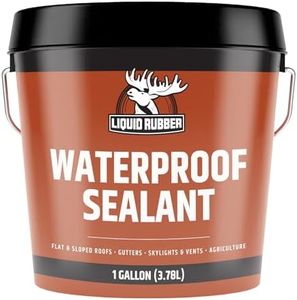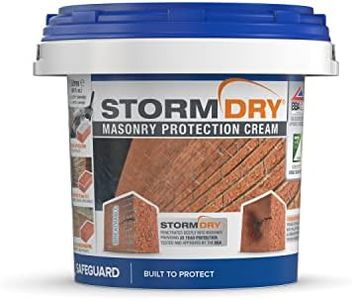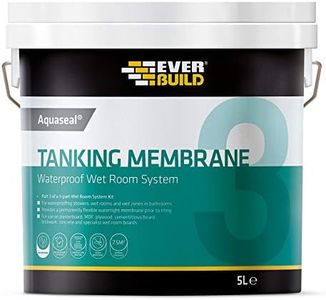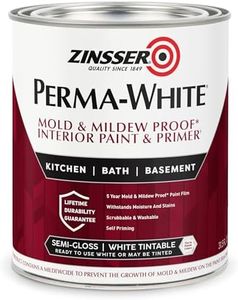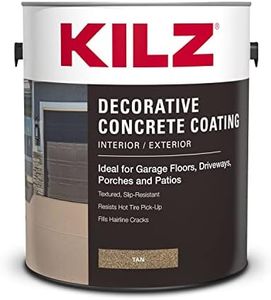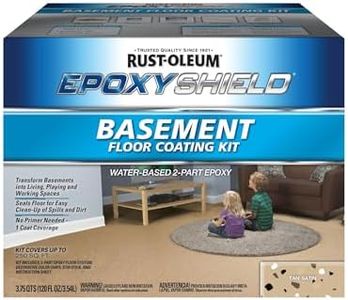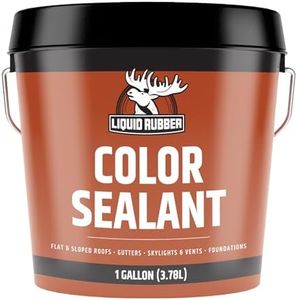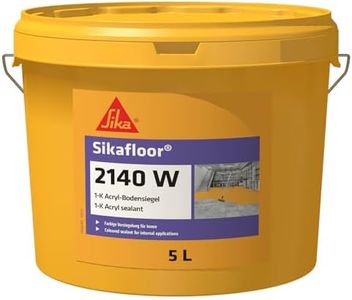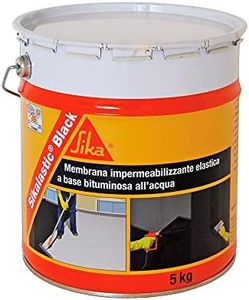We Use CookiesWe use cookies to enhance the security, performance,
functionality and for analytical and promotional activities. By continuing to browse this site you
are agreeing to our privacy policy
10 Best Waterproof Basement Paint
From leading brands and best sellers available on the web.Buying Guide for the Best Waterproof Basement Paint
Choosing the best waterproof basement paint is all about ensuring your basement stays dry, safe, and protected from moisture. Before you select a product, think about the condition of your basement walls and floor, your primary concerns (such as minor seepage, excess humidity, or visible leaks), the look you want to achieve, and how much time you are willing to spend on preparation and application. Always make sure your basement is clean, structurally sound, and as dry as possible, and don't forget to address any major water issues before using waterproof paint. Waterproof paint is best as a preventative or finishing touch, rather than a fix for serious water entry.Waterproofing TypeWaterproof basement paints come mainly in two types: water-resistant and fully waterproof. Water-resistant paints help repel a small amount of moisture and humidity, and are good for damp areas, while fully waterproof paints are designed to block water from penetrating through concrete or masonry walls. For minor dampness, water-resistant solutions may be enough. If your basement wall has visible seepage or is prone to leaks, a fully waterproof paint is more suitable. Consider the level of moisture you need to control when choosing between these types.
Base Type (Latex vs. Oil-Based)The base type refers to what the paint is made from, usually either latex (water-based) or oil-based formulas. Latex-based paints are easier to clean up, dry faster, and have less odor, which makes them user-friendly for most home projects and suitable for mild moisture problems. Oil-based paints tend to adhere better to surfaces and can block heavy moisture or efflorescence more effectively, but they are harder to clean and may have a stronger smell. If you want an easy DIY job for light dampness, latex could be best. If you’re dealing with tough, moist walls, oil-based formulas might offer stronger protection.
CoverageCoverage refers to how much area a single gallon of paint can cover, which is typically marked in square feet. Higher coverage means you’ll need less paint to finish your project, saving you time and effort. However, thick or rough basement walls may require more paint per square foot than smooth walls. When estimating coverage, check the product recommendations and consider if your walls are porous or previously unpainted, as these often soak up more paint—leading you to need more than the listed coverage.
Mold and Mildew ResistanceMany waterproof basement paints offer mold and mildew resistance, which helps prevent these frustrating and unhealthy growths in damp, dark areas. This feature is especially important if your basement is humid or you’ve had problems with mold in the past. If you’re mostly painting finished, dry areas, this may be less important, but for an unfinished basement or areas with high humidity, choose paints labeled with added protection against mold and mildew.
Application Surface CompatibilityNot all basement paints are designed for all surfaces. Some work best on concrete, others on masonry, block, or previously painted surfaces. Application surface compatibility ensures that the paint will stick properly and deliver the expected waterproofing benefits. Always check that your paint is a good match for the exact surface in your basement. Paint labeled as multi-surface will work in most cases, but if you know your wall material, pick a paint optimized for it for the best bond and life.
Dry Time and CuringDry time is how long it takes the paint’s surface to feel dry, and curing is the time before the paint fully hardens and delivers its protective features. Faster drying paints let you finish projects sooner, but thicker or oil-based paints may take longer to cure. If you need to use your basement space quickly, quicker dry and cure times are useful. However, thicker, slower-drying paints often create a more durable barrier, which might be preferable for long-term waterproofing.
Color and FinishWhile most people think of basement waterproof paints as just white, many are available in different colors or with various finishes like matte, satin, or semi-gloss. The right color can brighten up a dark basement, while the chosen finish can affect maintenance and aesthetics. Matte hides imperfections, while shiny finishes are easier to clean. Choose based on whether you desire a decorative look or just basic protection.
